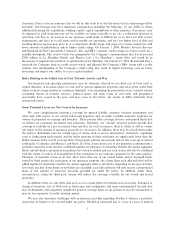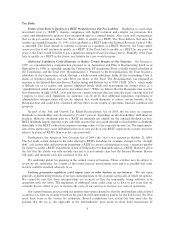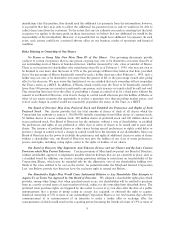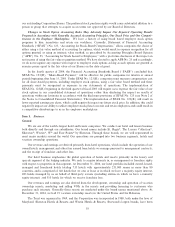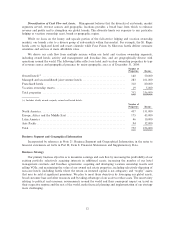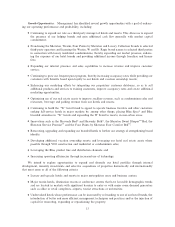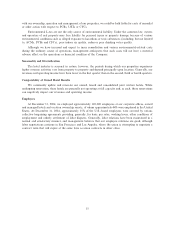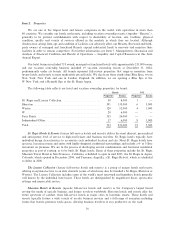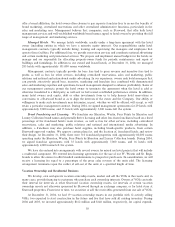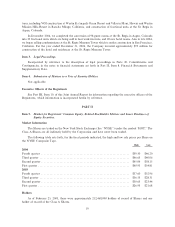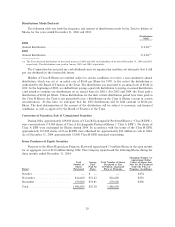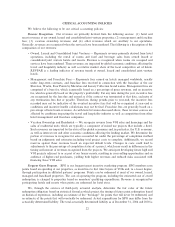Starwood 2004 Annual Report Download - page 23
Download and view the complete annual report
Please find page 23 of the 2004 Starwood annual report below. You can navigate through the pages in the report by either clicking on the pages listed below, or by using the keyword search tool below to find specific information within the annual report.with our ownership, operation and management of our properties, we could be held liable for costs of remedial
or other action with respect to PCBs, USTs or CFCs.
Environmental Laws are not the only source of environmental liability. Under the common law, owners
and operators of real property may face liability for personal injury or property damage because of various
environmental conditions such as alleged exposure to hazardous or toxic substances (including, but not limited
to, ACMs, PCBs and CFCs), poor indoor air quality, radon or poor drinking water quality.
Although we have incurred and expect to incur remediation and various environmental-related costs
during the ordinary course of operations, management anticipates that such costs will not have a material
adverse eÅect on the operations or Ñnancial condition of the Company.
Seasonality and DiversiÑcation
The hotel industry is seasonal in nature; however, the periods during which our properties experience
higher revenue activities vary from property to property and depend principally upon location. Generally, our
revenues and operating income have been lower in the Ñrst quarter than in the second, third or fourth quarters.
Comparability of Owned Hotel Results
We continually update and renovate our owned, leased and consolidated joint venture hotels. While
undergoing renovation, these hotels are generally not operating at full capacity and, as such, these renovations
can negatively impact our revenues and operating income.
Employees
At December 31, 2004, we employed approximately 120,000 employees at our corporate oÇces, owned
and managed hotels and vacation ownership resorts, of whom approximately 44% were employed in the United
States. At December 31, 2004, approximately 35% of the U.S.-based employees were covered by various
collective bargaining agreements providing, generally, for basic pay rates, working hours, other conditions of
employment and orderly settlement of labor disputes. Generally, labor relations have been maintained in a
normal and satisfactory manner, and management believes that our employee relations are good, although
labor negotiations continue in San Francisco and Los Angeles, where the union is attempting to negotiate a
contract term that will expire at the same time as union contracts in other cities.
15


